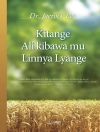The mission to the Gentiles and their conversion into the church gave rise to conflict in the early Christian community. Acts 11:1-18 indicates that there was clearly dissension over the issue of Peter going to the house of Cornelius and participating in table fellowship with him. The issue was no small matter, since it could have split the church. How then does Luke portray the resolution of the conflict? Instead of writing a long theological treatise, the author employs the art of storytelling. The study of Luke-Acts has long been dominated by historical-critical methods, focusing on Luke as a historian and theologian. This work, however, proposes a paradigm shift by looking at Luke as a storyteller. Since narrative criticism is concerned with the work of the writer as author and not simply redactor, and since it treats narrative precisely as narrative, the time has come to apply the narrative-critical approach to Acts 10:1–11:18. This approach explores a different set of questions: What is the story of Peter and Cornelius about? How is the story told? What effect does the story have on the reader and why?
关于作者
van Thanh Nguyen, SVD, STh D, is an associate professor of New Testament Studies and the Director of the Master of Divinity Program at Catholic Theological Union in Chicago, Illinois. He is the author of Peter and Cornelius: A Story of Conversion and Mission and Stories of Early Christianity.







![的封面 Brian Schrag & Julisa Rowe: Community Arts for God's Purposes [Chinese] 貼近神心意的社群藝術 的封面 Brian Schrag & Julisa Rowe: Community Arts for God's Purposes [Chinese] 貼近神心意的社群藝術](https://static.worldofdigitals.com/thumb_webp/740/9781645083740.webp)




